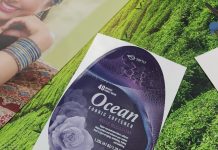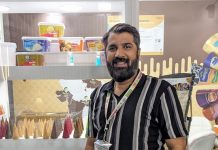Abdelghany Eladib, president and general manager of India, Middle East, and Africa (IMEA), and Samuel Sigrist, chief executive officer of SIG Group, recently visited India. Primarily to meet the company’s customers and monitor the developments at its new factory in Ahmedabad. They held a media roundtable at the company’s India head office in Gurugram, where Packaging South Asia was present.
SIG is a leading packaging solutions provider for liquid and food packaging of aseptic cartons. According to its estimates, India the largest milk producer contributes around 25% of global milk production presenting an aseptic dairy market of around 1 billion liters. Driven by government initiatives such as Operation Flood and rising consumer demand, the dairy market in India is projected to grow significantly to reach around ₹31 lakh crore by 2027. This growth, however, simultaneously implies the continued growth of plastic packaging, which is a significant challenge. While the dairy industry thrives in the country, there is a need for more sustainable packaging solutions.

SIG’s new manufacturing aseptic packaging materials plant in Ahmedabad was inaugurated last year and clients include Amul, KMF, MilkyMist, Heritage Dairy, Godrej Creamline Dairy, and Omfed. It partners with leading beverage players such as Parle Agro, Coca-Cola, PepsiCo, Dabur, and ITC for packaging juices and non-carbonated beverages.
The year–old plant houses production assets used to manufacture components and finished packaging, including blown film extruders, injection molding cells, bag-in-box manufacturing machines, and a mold-making facility for packaging fitments and closures for both bag-in-box and spouted pouches. The company’s other plants are in Palghar near Mumbai, where packaging material for bag-in-box and spouted pouches are manufactured, and Pune, where horizontal form-fill-seal machine (HFFS) equipment is built.
Citing the country’s large market potential, Eladib describes the company’s Indian investments as strategic. “The adoption of sustainable alternatives in India is quicker and structured compared with the majority of the IMEA region, the region of which I am in charge. The Indian market is our top priority, leading us to set up the 10th global manufacturing facility here. The country has a huge population leading to a bigger consumption. It being the largest producer of milk makes our investments that much more significant,” he said.
On India being a cost-sensitive market, Eladib says this sensitivity gives a push to innovations. India has enabled innovations at the smallest scale possible, giving rise to products in the price range of Rs 10 or even lower. Speaking on competition, he said, “Competition is good even when talking about market share. If our competition achieves something, it makes us do it better. They are our source of inspiration. We are no judges to decide what’s best, we can only provide it. Ultimately, consumers are the judge, as what they prefer stays in the market.”

SIG has invested in AI (artificial intelligence)-integrated automation in its machinery. Eladib compares its utility to consulting a doctor before a problem even occurs. “Our manufacturing process is a multi-track system wherein multiple cartons are made simultaneously. If a problem occurs on one track and the AI informs us beforehand, we only have to stop that one track while others keep producing. It reduces any risk to efficiency or downtime that may occur if the machine has to be stopped entirely.”
“Our cartons run on our flexible, high-speed, and efficient filling equipment. The sleeve-based filling and ultrasonic sealing technology enables agile switching of volumes and formats, with short changeover times, and speed intact at all flexibility levels,” he adds. “By 2030, we will develop a packaging structure for our aseptic cartons that will be made of at least 90% paper, with an interim goal of reaching at least 85% paper content by 2025.”
Most packaging manufacturers are attempting to make a move toward sustainability. Liquid packaging manufacturers, however, are struggling to move to monolayer packaging and the right recycling streams. Aware of the challenges, SIG is working to decrease aluminum in packaging to make it more recyclable.
“Across our packaging, we are trying to replace virgin fossil-based polymers with renewable polymers linked to tall oil, a forest-based circular alternative, linked to post-consumer recycled material. By increasing the share of paper, we will further reduce the already low amount of plastics. To spread more awareness about sustainability, especially with the next generation, we have collaborated with 16 schools in the Delhi-NCR. We hope to produce all types of customized sustainable packs suited to our customer needs,” he concludes.










